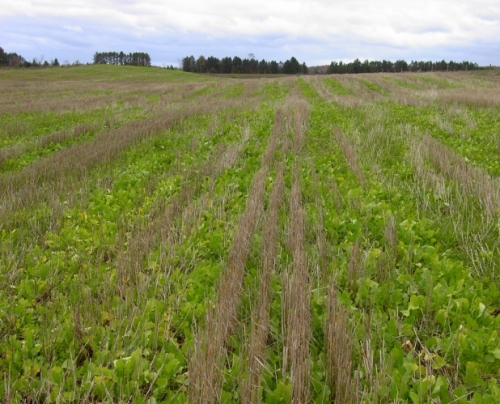Using oilseed radish to extend the grazing season
Michigan experienced one of the worst droughts in recent history in 2012. Some livestock farmers may experience feed shortage this fall. Oilseed or field radish can help remedy that.

Oilseed radish (Raphanussativus var. oleiferus Metzg) is not a new crop in Michigan. It has been used primarily as a cover crop. There are many cultivars such as Adagio, Arena, Colonel, Common, Remonta, Revena, Rimbo and Ultimo. Oilseed radish can be interseeded into the stubble after wheat or oats are harvested.
The following are planting and management information from Michigan State University Extension can help producers interested in growing oilseed radish:
- Life cycle: annual crop, winterkill before entering winter, still good growth under cool temperatures and even after a couple of heavy frosts
- Seeding rate: 10 to 20 pounds per acre, 10 to 15 pounds for drilling and 15 to 20 pounds for broadcasting
- Planting time: early to mid-May or early to mid-August
- Planting depth: one quarter to one half inch
- Uses: cover crop, forage for early and late-season grazing, green manure for cash crops, erosion control, weed suppression, soil aeration (biodrilling effect due to thick, deep tap root) and nitrogen scavenger for heavily manured fields
- Potential height: one to three feet, depending on cultivar, soil fertility and soil-moisture level
- Grazing: Oilseed radish can be grazed 60 days after interseeding into stubble following harvest of winter wheat or oats (see photos)
Additional information:
- MSU Extension’s Drought Resources



 Print
Print Email
Email

